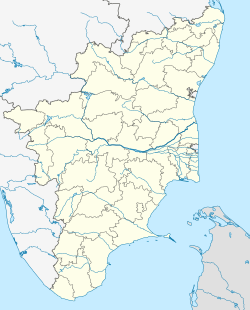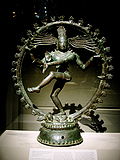| Vedapureeswarar Temple | |
|---|---|
 | |
| Religion | |
| Affiliation | Hinduism |
| District | Mayiladuthurai |
| Deity | Vedapureeswarar Temple |
| Location | |
| Location | Therazhundur, near Kuttalam |
| State | Tamil Nadu |
| Country | India |
| Geographic coordinates | 11°02′N79°35′E / 11.04°N 79.58°E |
| Architecture | |
| Type | Dravidian architecture |
Therazhundur Vedapureeswarar Temple is a Hindu temple located at Therazhundur in Mayiladuthurai district of Tamil Nadu, India. The historical name of the place is Thirunedungalam. [1] The presiding deity is Shiva. He is called as Vedapureeswarar. His consort is known as Soundaraambigai. At the right side of the temple, Madesvarar shrine is found.
Contents
The Archaeological Survey of India (ASI) has recently documented a set of inscriptions dating to the period of the Imperial Cholas at this temple. Two Tamil inscriptions, engraved on the door jamb and written in 12th-century script, are dated to the 34th and 44th regnal years of Kulottunga Chola I. [2]







